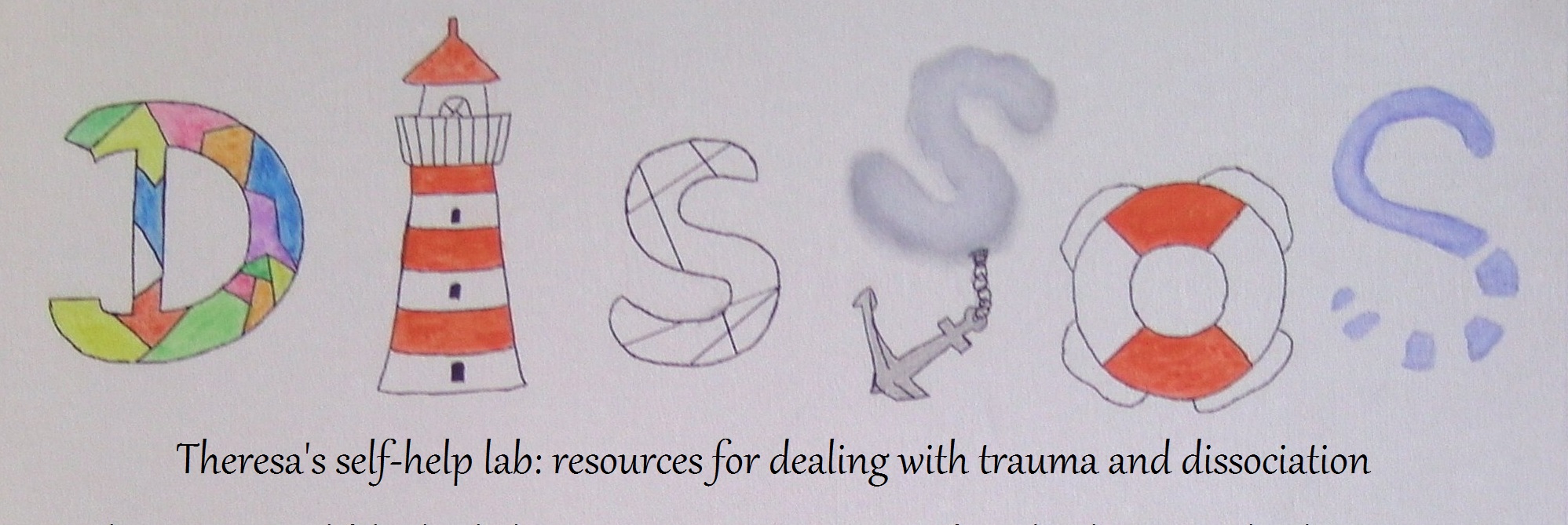The basic idea behind trauma processing is that trauma memories were stored but they weren’t integrated into our memory properly. They never became part of our life history and when they come up, it feels like they are happening now. Completely over-simplified, we can say that something about them didn’t settle right. When we process […]
therapy
Integrative Actions in Trauma Processing for DID
The concept behind trauma processing is usually to bring up the traumatic memory in a controlled setting, use an intervention to break up the fixed way in which it got stuck and then support the brain in re-organizing the memory in a new and more connected/integrated way. That is why you will find the term […]
Screen Technique in Trauma Therapy
For the Screen Technique, trauma patients are asked to imagine their memories like a movie on a screen. It is supposed to create some distance to the memory to avoid flooding. The memory is not happening right here right now, it is just on the screen. The pictures on the screen can then be changed […]
Preparing for Trauma Processing for DID
We can treat trauma processing like any other difficult situation and prepare for it by making a BDA Plan. It is a structured way to make sure that we have everything we need so that the therapy session can go smoothly. Being informed and organized takes at least some of the stress out of a […]
Misinterpretations of DID-related behaviors (for helpers)
When we have DID, it is incredibly easy to get a misdiagnosis because the behaviors that we show based on our trauma history or inner experience get misinterpreted by mental health professionals. Common misdiagnoses are all kinds of personality disorders, bipolar disorder or schizophrenia. In some cases, we might show isolated behaviors that are considered […]
Grounded Rescripting with dissociative parts
In Rescripting Techniques we work with the traumatic memory by looking at the scene and then changing things about it in our imagination to resolve the situation and bring it to a new and better ending. It is often done in the form of a rescue mission where our present self or adult parts enter […]
Recovery from trauma processing
Trauma processing is difficult on a number of levels. There is emotional stress when we look at scenes from the past, physical stress because we re-experience some of the stress responses, mental stress because our brain is trying hard to process the memory and figure out the necessary integrative actions and there is stress within […]
The 3 Phases of Trauma Therapy 3: Integration
Trauma and DID therapists commonly agree on working with a 3-phase model. It describes an order in which to do work for the best, fastest and safest results. In an attempt to keep articles short we will share about the different phases in separate articles. The 3 phases are Stabilization Trauma Processing Integration It […]
House of Healing: After-Care for Memory Processing with dissociative Parts
There are different ways to approach trauma processing with dissociative parts. All of them are exhausting and slightly incomplete. Our therapy sessions are long enough to work with the memory but they are never long enough to deal with all the feelings of hurt and injury, they can never cover a whole recuperation phase. What […]
Somatic Experiencing – Good for DID Treatment?
Somatic Experiencing is a body-focused trauma therapy that was developed by Peter Levine. It is based on the idea that trauma is not mainly a problem of memory or attachment. The theory is that survival energy that was mobilized during dangerous situations could not properly dissolve (usually because of limited ability to move the way […]
Rescripting with DID parts: Same Technique – different Missions
[Disclaimer: This article is based on personal experience with a bunch of different but similar rescripting techniques. For DID therapy, rescripting in IFS barely differs from rescripting with IRRT or similar techniques because all of them have to be adapted. Once they are adapted we can notice two different patterns for inner processes instead of just […]
Managers, Exiles and Firefighters in DID
Using IFS for DID therapy is a mixed bag. There is advanced training that does support DID therapy but many people with DID who are confronted with the basic training feel alienated and like something about it is off. It was not developed with dissociative barriers in mind. There is still a basic dynamic that […]
- 1
- 2
- 3
- …
- 5
- Next Page »
